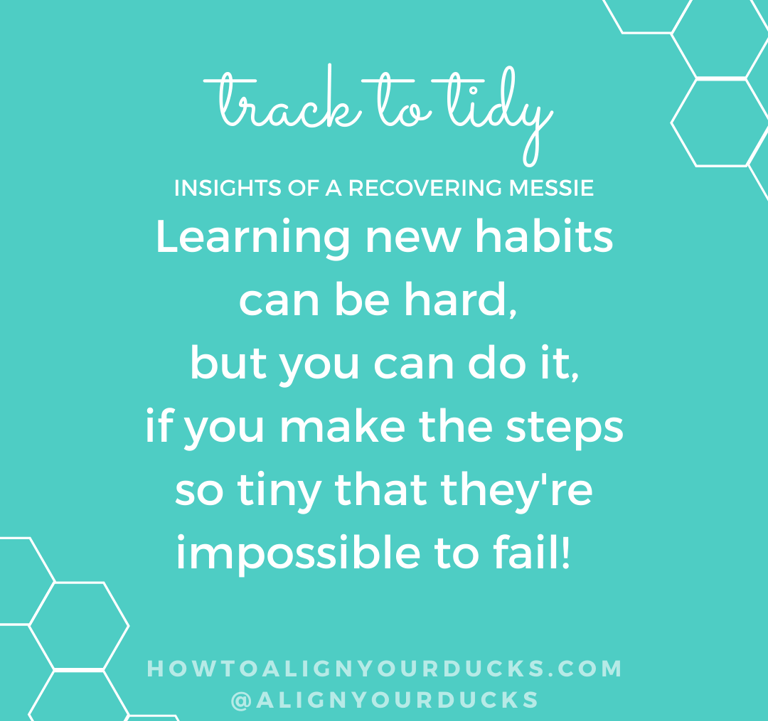5. Make the steps so small, you can't fail...
Track To Tidy Insights 5/6
In this series of blog posts I take you through the thought process that lead me to the game Track To Tidy. All these principles are common sense and were familiar to me already but I didn't really internalize them until going through this track of thoughts. I hope my insights will help you find a solution to your issues with clutter, whether it's this game of mine or a different one you develop for yourself.
Part 1. When schedules and checklists won't work for you...
Part 2. ...would minimalism work?
Part 3. Do this one thing and you'll have a tidy home...
Part 4. ...but actually, it's not one thing but a million different things!
After the excitement of decoding the secret for permanent and rather effortless tidiness, I felt a short moment of despair because of the workload it required: learning a new habit for each piece of the mess wasn't going to be easy.
During my years of struggle with clutter I had identified that my habits needed overhauling and I had studied the theory of habit change and the power of positive reinforcement (with intense hyperfocus - if you have ADHD or know someone who has, you know what I'm talking about!). But never before I had grasped what habits I should actually learn to make a difference.
I had tried to learn the habit of weekly cleaning sessions or being consistent with decluttering checklists. I had also been aware (after failing them all) that those were too complicated habits for me to learn. Even the habit of shining my sink every night turned out to be too much for me - and made me feel like an utter failure as it was supposed to be the fool-proof way to start getting your ducks in a row (yet I love and appreciate Flylady highly, she was my first inspiration and source of hope years ago, when I thought I was the only hopeless messie in the world).
How shining my sink felt like every night
Now everything I had learned about habits came together and avalanched in my mind. The algorithm for permanent and effortless tidiness was formed:
1. Dismantle the mess into atomic parts
2. Find a super easy habit to learn to get each part under control
3. Learn one habit at a time
4. Keep the pace so slow the habit really becomes a second nature before moving to the next one
5. Most importantly: If the habit turned out to be too much to learn at once, it would need to be broken down into smaller steps, so that it would be impossible to fail! Giving up is NOT an option!


But one key ingredient was still missing. This would be a slow process - veeeery sloooow - and it would require a lot of consistency. Two things ADHDers are NOT very good at. For a millisecond, I had another moment of despair, but the newly found hope pushed my track of thought forward to the last piece of the puzzle.
You'll find out what it was in the last part of this series!
